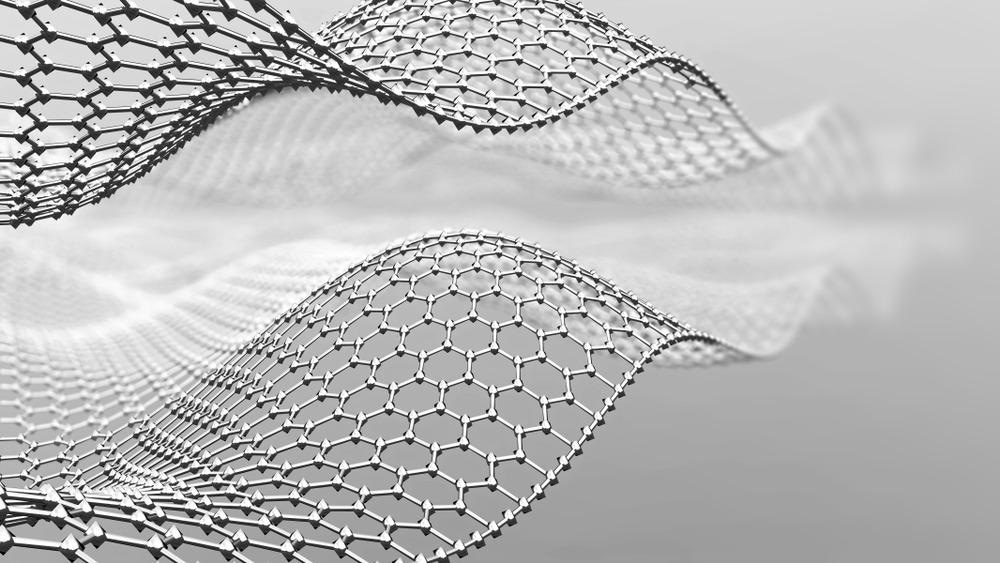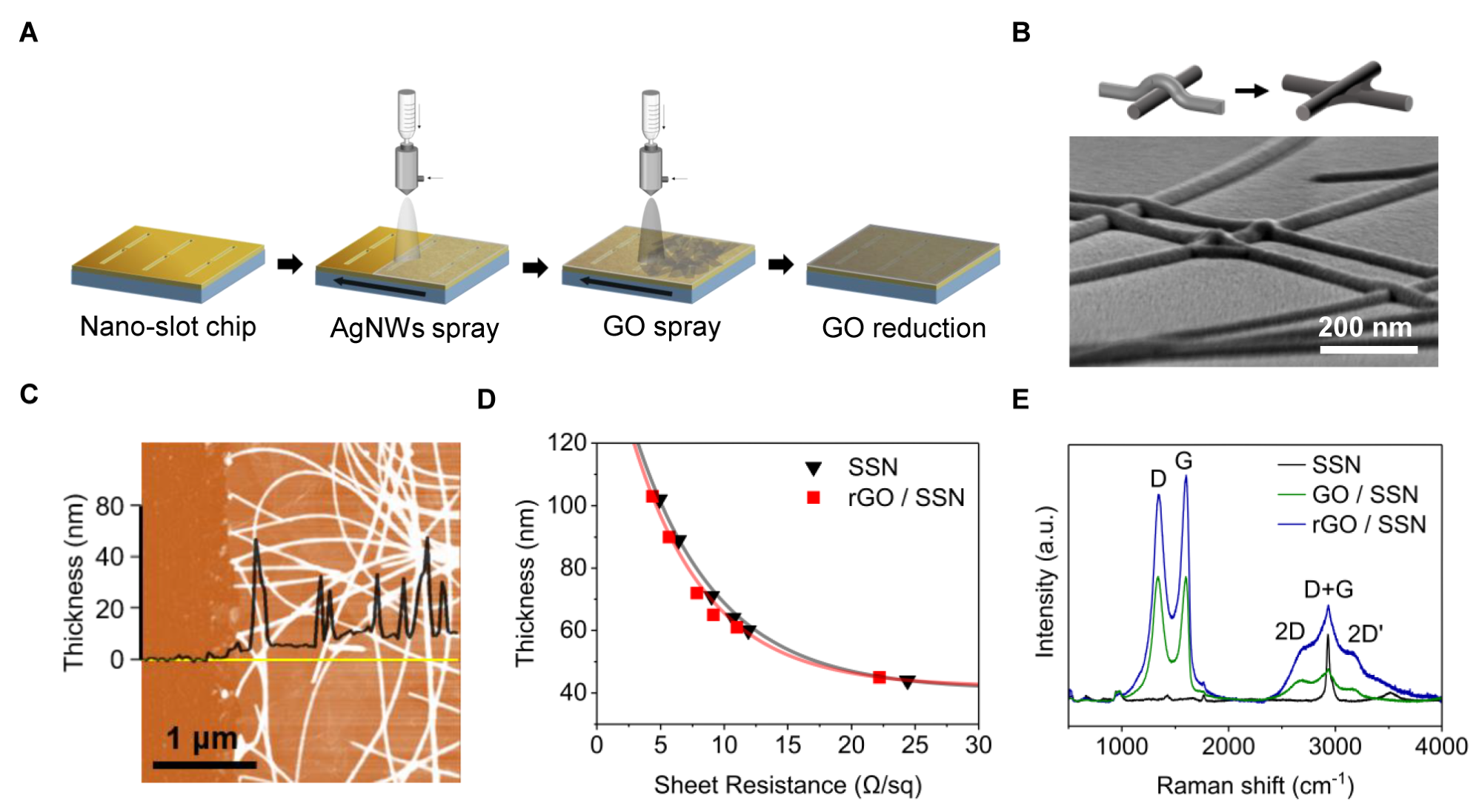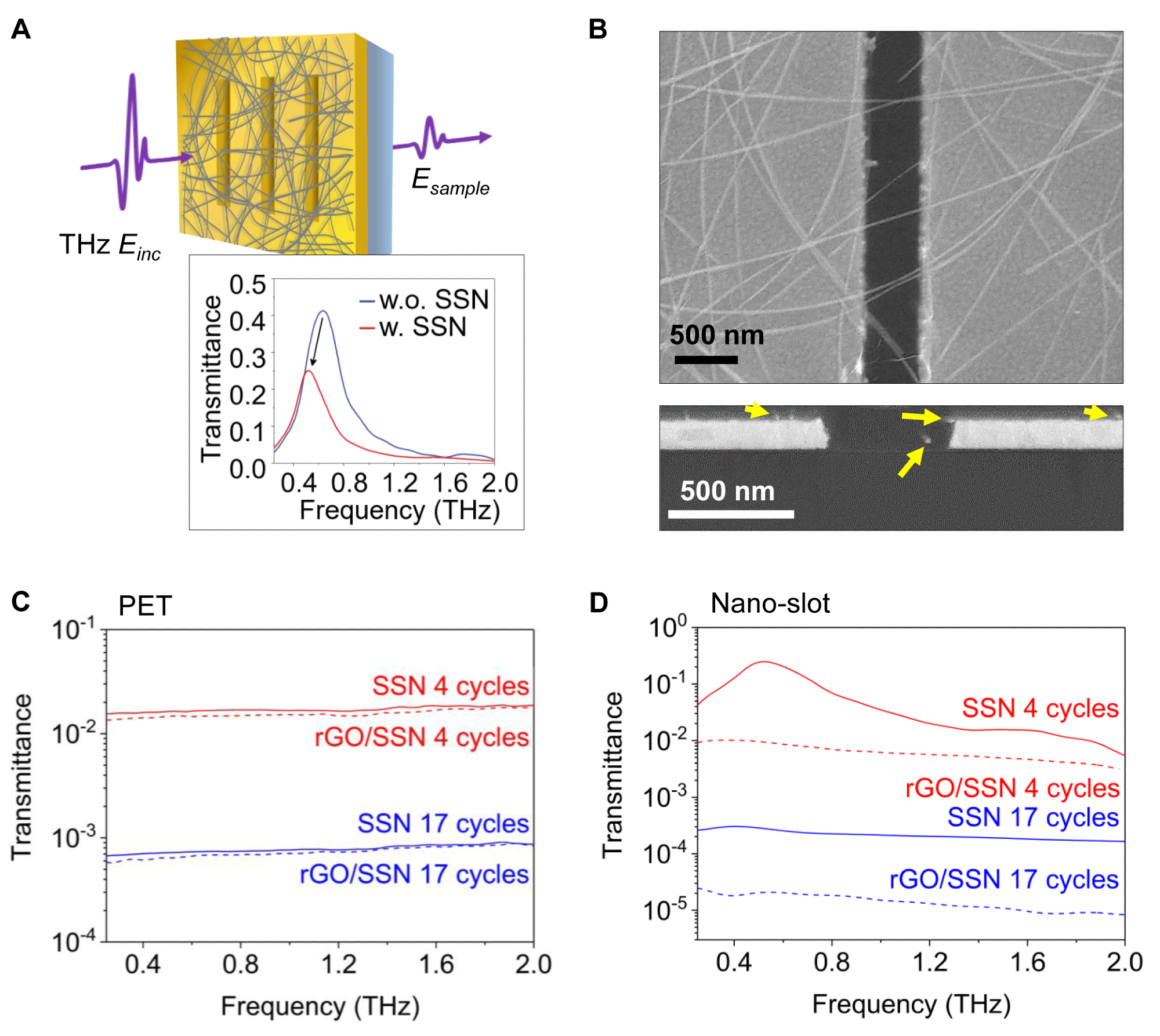In a study available as a pre-proof in the journal iScience, silver (Ag) nanowires covered with reduced graphene oxide (rGO) and nano-sized THz metamaterials demonstrated considerably improved THz shielding efficacy compared to those lacking nano-sized metamaterials.

Study: Effective terahertz shielding properties of extreme graphene-silver nanowire surfaces investigated by nanoprobing. Image Credit: Neon_dust/Shutterstock.com
Shielding of terahertz (THz) waves is an important matter in the domain of THz electromagnetic (EM) waves which has lately attracted a lot of interest in the sectors of security and communication.
Why is Terahertz Shielding Important?
THz-incorporated systems have surfaced as a prospective technology for a wide range of uses, including cordless transmission, nondestructive testing, biological monitoring, spectroscopy, scanning, and security.
Since it involves non-ionizing irradiation and is non-destructive, the THz spectrum has lately received interest as a non-destructive surveillance technology and inter- and intra-chip transmission as a high-speed link.
Sub-terahertz frequency (100 GHz – 1 THz) in particular forms the next-generation mobile connectivity spectrum as a result of the fast expansion of online technology and the requirement for large bandwidth and extremely high data speeds, up to terabytes per second, across vast distances.
As implementations are becoming more diversified and the advancement of photonic or electronic equipment for effective generation, dynamic sensing, and active regulation progresses, the concept of shielding is quickly becoming significant. This is particularly noticeable when it comes to preserving a waveguide from undesirable disruption from exterior EM sources.
For high-efficiency THz EM interference screening, several composite coatings containing conducting component flakes, such as graphene, carbon nanotubes, MXenes, and metallic nanowires (NWs), have thus far been presented.

Figure 1. rGO/SSN film fabrication and measured characteristics (A) Schematic of the fabrication process of SSN with the rGO film on Au nanoslot chips. (B) Scanning electron microscope (SEM) image of silver nanowires with the rGO film structure. Inset scheme shows the linking process after sintering. (C) Atomic force microscope (AFM) image for the surface profile of a rGO/SSN film; the black line denotes thickness. (D) Measured film thickness according to the sheet resistance. (E) Raman spectra of an SSN film, GO/SSN film, and rGO/SSN film. © Lee, G.,et al (2022)
Silver Nanowires – Promising Candidates for Terahertz Shielding
Owing to its great conductance, ease of manufacture, minimal thickness (in the nanometric range), elasticity, and compliance with shapes, a randomized system of metallic nanowires is a good choice as an excellent shielding component.
Silver NW systems, for example, can be easily created with outstanding electric characteristics using spray or spin-covering processes. Because of such distinct properties, silver NWs may be used to replace bulk silver sheets while retaining the benefits of the nanomaterial's large surface proportion.
Other procedures, such as high heat sintering, physical compression, photon-induced welding, and composites with different components, may improve shielding efficiency (SE). However, due to the large scale disparity between fairly high wavelength (micrometer to centimeter) and the flake dimensions (usually nanometers), this method for minimizing interference problems is not completely established.
Methodology of the Research
In this study, the researchers demonstrated a much-improved THz wavelength SE utilizing a sintered silver nanowire (SSN) framework and a coating of reduced graphene oxide (rGO) sheet on a nano-slot arrangement.
With the use of a simple spraying approach, a dynamic capability for potential implementations was proven. A mixture combining silver NWs and flakes of graphene oxide was drop-casted upon a nano-slot arrangement, resulting in an extremely thin sheet used for THz studies.

Figure 2. Far-field THz-TDS transmission measurement (A) Schematic description of the THz transmission measurement through the SSN film. Inset presents the normalized transmittance for chips with/without an SSN film. (B) Top and cross-view SEM images of SSNs on a nanoslot. Yellow arrows indicate each single silver nanowire. THz transmittance for different spray coating cycles of the SSN and existence of the rGO coating on a (C) PET substrate and (D) nanoslot chip.© Lee, G.,et al (2022)
Key Findings of the Study
The terahertz time domain spectroscopy (THz-TDS) assessment was used in this work to assess the electric and optic characteristics of SSN sheets both with and without the reduced graphene oxide covering.
When hybridized with nanoscale slot arrangements, the rGO covering considerably improved shielding capabilities in the THz frequency range.
The conjunction of an rGO-coated SSN system and slots of a few nanometers in thickness may improve transmitting shut-off several orders of magnitude, enabling dynamic usage of nanofilms for regulating THz-frequency EM waves. Furthermore, the inter-nanowire charge percolation hypothesis was used to explain this occurrence.
As THz waves are researched for usage in future cordless networks, the screening apparatus proposed in this study, which can be readily generated in a vast space and can be flexibly adjusted according to the target frequency, will be of considerable interest.
The team has moved a step further to understanding the sheltering process by shrinking slot widths to the nanometric range.

Figure 3. EMI SE in the specific THz frequency range. (A) SSN and rGO/SSN films on PET substrates and (B) SSN and rGO/SSN films on nanoslot chips. The trends of each film type are presented by solid lines in (A) and (B). (C) Equivalent SE comparison between SSN and rGO/SSN films on both PET and nanoslot substrates. The numbers in the symbols indicate
the number of coating cycles. © Lee, G.,et al (2022)
Avenues for Future Work
Interwire percolation considerably affects the shielding effectiveness of silver NWs sprayed onto the nanoscale slot arrangement. However, several procedures that may improve charge percolation, like physical compression, chemical methods, and laser-based welding, are restricted because they produce gold nano-slot distortion. As a result, additional suitable substances or nanomaterials should be studied further.
Reference
Lee, G., Kim, S., Roh, Y., Lee, S.-H., Kim, D.-S., Kim, S., & Seo, M. (2022). Effective terahertz shielding properties of extreme graphene-silver nanowire surfaces investigated by nanoprobing. iScience. Available at: https://www.sciencedirect.com/science/article/pii/S2589004222003030
Disclaimer: The views expressed here are those of the author expressed in their private capacity and do not necessarily represent the views of AZoM.com Limited T/A AZoNetwork the owner and operator of this website. This disclaimer forms part of the Terms and conditions of use of this website.